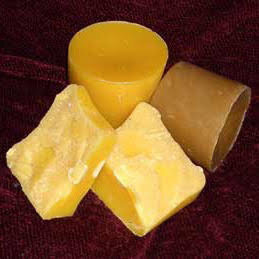

![FullSizeRender[1].jpg](https://images.squarespace-cdn.com/content/v1/5dbdbac4a7b69c23d81f4373/1573420024479-QUQ0S1BP6YWD0SAXVCCY/FullSizeRender%5B1%5D.jpg)




Minding our Beeswax
Ever been told to mind your own beeswax? Well, when they said it to us, we really paid attention! Honey bees produce wax from special glands on their abdomens between the ages of 8 to 15 days, and then they lose the ability. The bees must consume about 8 pounds of honey to produce one pound of beeswax, and a beekeeper must harvest about 100 pounds of honey to get one pound of wax cappings. Our beeswax products have won numerous prizes in local, state, and regional competitions.
Color and Fragrance
Natural beeswax varies in color from almost-white to light brown, but beekeepers consider lemon yellow to be the 'perfect' color. Freshly poured, beeswax has a wonderful sweet scent all its own. Both the fragrance and color of beeswax fade with time and exposure to light.
Clean Air Wax
Beeswax is the Rolls Royce of all candle waxes. It burns longest, does not drip, and does not add pollutants to the air as do paraffin candles. In fact, there is some speculation that burning beeswax actually cleans the atmosphere by adding negatively charged ions to the air.
Candles
Our tapers are all dripless. Novelty candles with varying cross-sections may drip because the wick size has to be a compromise between correct sizes for the various cross sections as the candle burns down. For best results, periodically douse the flame, trim the wick to 1/2" and re-light. Farm-made candles are all natural, with no color or fragrance added. We do, however, have a selection of tapers, votives and pillar candles in various colors and fragrances, produced by a fellow NJ beekeeper whom we know well and whose work we respect.
Bloom
Over time, beeswax will develop a white film known as 'bloom.' It does not affect the quality of the candle in any way and can be easily removed by buffing with a soft cloth.
